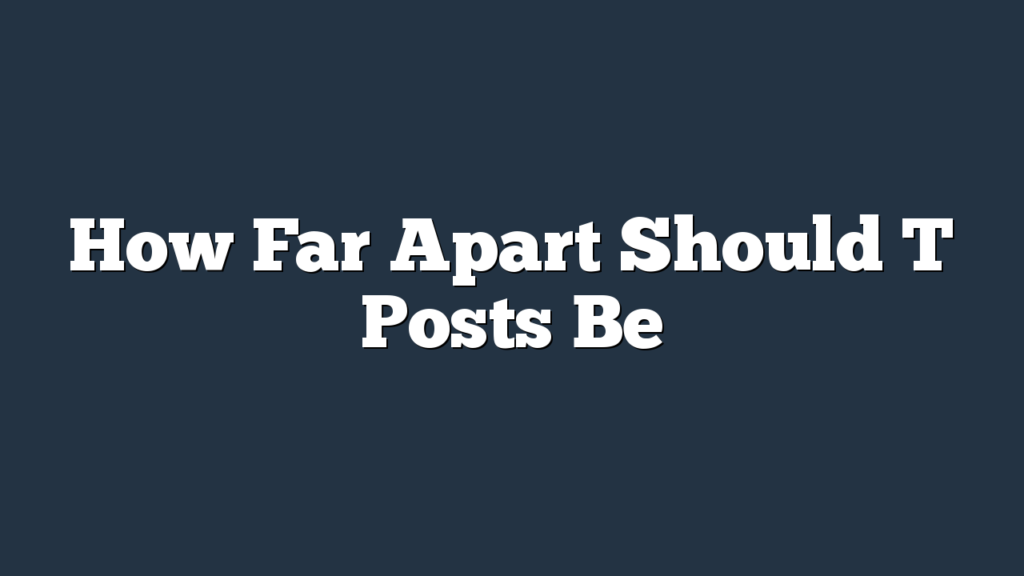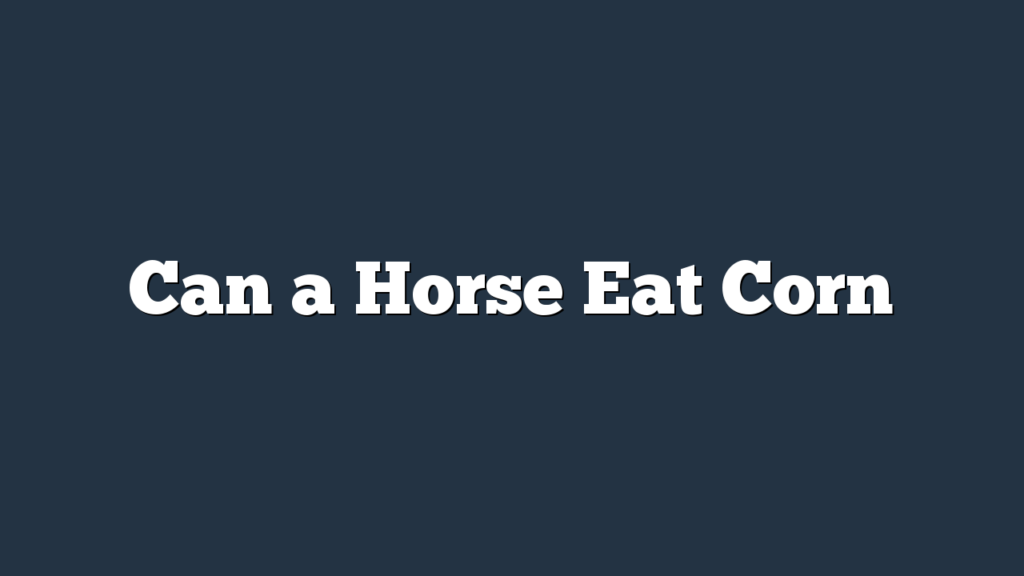Are you unsure about how far apart your T posts should be? Proper T post spacing is crucial for various applications, including livestock fencing, garden enclosures, and electric fencing.
By understanding factors like soil conditions and slope terrain, you can determine the optimal spacing for your T posts. This article provides essential tips to ensure stability and durability, as well as common mistakes to avoid.
Discover the right T post spacing to enhance the effectiveness of your fencing projects.
Importance of Proper T Post Spacing
Proper T post spacing is crucial for ensuring stability and durability in your fencing system. When deciding how far apart to place your T posts, there are several factors to consider.
One of the most important factors is the composition of the soil in your area. The type of soil you have can greatly affect the effectiveness of your fence.
For example, if you have sandy soil, you’ll need to space your T posts closer together to provide enough support. Sandy soil tends to be less compact and can shift easily, so having more T posts will help prevent your fence from leaning or falling over.
On the other hand, if you have clay or loamy soil, you may be able to space your T posts farther apart. These types of soil are more stable and provide better anchorage for the posts. However, it’s still important to consider other factors such as the height and tension of your fence, as well as any potential strain it may experience.
Factors to Consider for T Post Placement
When determining the placement of T posts for your fence, there are several factors to consider.
First, you should follow optimal spacing guidelines to ensure proper support and stability.
Additionally, the composition of the soil in your area can affect the placement of the posts, as certain soils may require closer spacing or additional reinforcement.
Lastly, the height of your fence should also be taken into account, as taller fences may require posts to be placed closer together for added strength.
Optimal Spacing Guidelines
To ensure proper stability and support, it’s important to consider several factors when determining the optimal spacing for T post placement.
One crucial factor is the soil type. If you have sandy or loose soil, you’ll need to space the T posts closer together to provide sufficient support. On the other hand, if you have compact or clay soil, you can space the posts further apart.
Another factor to consider is the fence material. Heavier materials, such as wood or metal, require closer post spacing to prevent sagging or leaning. Lighter materials, like wire or mesh, can be spaced further apart.
Soil Composition Effects
Consider the soil composition to determine the ideal spacing for T post placement. The soil composition effects the stability and strength of your garden enclosure, so it’s crucial to take it into account.
Here are a few factors to consider:
- Drainage: Soil that retains water can become soft and unstable, requiring closer T post spacing for added support.
- Clay Content: Clay soil is heavy and compact, making it more difficult to drive T posts in. In this case, wider spacing may be necessary to avoid excessive strain on the posts.
- Sandy Soil: Sandy soil is loose and lacks cohesion, making it prone to shifting. Closer T post spacing can provide the necessary reinforcement for a sturdy garden enclosure.
Fence Height Considerations
To determine the ideal spacing for T post placement, you should take into account the height of your fence. Fence height considerations are crucial when determining the strength and stability of your fence structure. A taller fence requires more support to withstand wind and other external forces. Below is a table outlining the recommended T post spacing based on fence height considerations for an ideal garden enclosure:
| Fence Height | T Post Spacing |
|---|---|
| 4 feet | 6-8 feet |
| 6 feet | 6-7 feet |
| 8 feet | 6 feet |
| 10 feet | 5-6 feet |
| 12 feet | 5 feet |
Understanding Soil Conditions for T Post Installation
You should assess the soil conditions before installing T posts. This is important because the soil moisture and T post installation depth can greatly affect the stability and longevity of your fence. Here are some key factors to consider:
- Soil Moisture: The moisture content of the soil plays a crucial role in determining the strength of the T post installation. If the soil is too dry, it may not provide enough support for the post, leading to a weak fence that can easily topple over. On the other hand, if the soil is too wet, it can make the installation process challenging and result in posts that are prone to shifting or sinking.
- T Post Installation Depth: The depth at which you install the T posts is another crucial factor. The posts should be driven deep enough into the ground to ensure stability and prevent them from leaning or falling. The exact depth will depend on various factors such as the height of the fence and the type of soil you have. It’s generally recommended to bury at least one-third of the post’s length, but you may need to go deeper in certain soil conditions.
Recommended T Post Spacing for Livestock Fencing
Now that you understand the importance of assessing soil conditions for T post installation, let’s explore the optimal spacing for T posts in livestock fencing.
When it comes to determining the recommended T post spacing for your livestock fencing, there are several factors to consider, with soil composition being a significant one.
The composition of your soil can have a direct effect on the stability and strength of your livestock fence. Sandy or loamy soils, for example, tend to be less compact and provide less support for T posts. In these cases, closer T post spacing is recommended to ensure the fence remains sturdy and secure. On the other hand, clay or compacted soils offer better stability, allowing for wider spacing between T posts.
It is crucial to strike a balance between cost and effectiveness when deciding on T post spacing. While wider spacing may be more cost-effective, it can compromise the strength and integrity of your livestock fence. On the contrary, closer spacing ensures better support and reduces the risk of animals escaping or predators entering the enclosure.
Ultimately, the recommended T post spacing for your livestock fencing will depend on the specific soil composition of your property. Consulting with fencing experts or professionals in your area will help you determine the optimal spacing that ensures the safety and security of your livestock while also considering the economic aspects of your project.
Optimal T Post Spacing for Garden Enclosures
Are you wondering what the optimal T post spacing is for your garden enclosure?
Finding the ideal spacing between T posts is crucial for maintaining the structural integrity of your garden fencing.
In this discussion, we’ll explore the factors that influence the optimal T post spacing and provide some guidelines to help you create a secure and effective garden enclosure.
Optimal T Post Spacing
To achieve optimal T post spacing for garden enclosures, it’s recommended to space the T posts evenly along the perimeter. This ensures proper support and stability for your garden fence. Here are some guidelines to help you determine the optimal spacing:
- Consider the height and weight of your garden plants or crops. If you have tall or heavy plants, closer T post spacing may be necessary to prevent the fence from sagging or collapsing.
- Take into account the soil conditions and terrain of your garden. If the soil is loose or the ground is uneven, placing the T posts closer together can provide additional stability.
- Think about the purpose of your garden enclosure. If you’re trying to keep out small animals, such as rabbits, a closer T post spacing will help prevent them from squeezing through the gaps.
Ideal Garden Enclosure?
Achieve the ideal garden enclosure by determining the optimal T post spacing for your specific needs.
When designing your garden enclosure, it’s important to consider the ideal garden design and the benefits of garden enclosures. An ideal garden design promotes healthy plant growth, maximizes space utilization, and enhances the overall aesthetic appeal of your garden.
A garden enclosure provides numerous benefits, such as protecting your plants from pests, creating a controlled microclimate, and preventing damage from strong winds or heavy rain.
To achieve these benefits, it’s crucial to determine the optimal T post spacing for your garden enclosure. By spacing the T posts at the right distance, you can ensure the stability and strength of the enclosure while allowing enough space for your plants to thrive.
Adjusting T Post Spacing for Sloped Terrain
When working on sloped terrain, it’s important to consider how to adjust the spacing between T posts. Uneven ground can pose a challenge when determining the appropriate distance between posts. Here are some tips to help you adjust T post spacing for hilly terrain:
- Evaluate the slope: Before installing the T posts, assess the slope of the terrain. Is it a gentle incline or a steep slope? Understanding the slope will help determine the best spacing between posts.
- Account for stability: On hilly terrain, stability is crucial. To ensure the fence remains sturdy, consider placing T posts closer together. This will provide additional support and prevent the fence from leaning or collapsing.
- Follow the contour: To maintain a consistent appearance, it’s important to follow the natural contours of the land. Adjust the spacing between T posts accordingly, aligning them with the slope to create a seamless and visually appealing fence.
T Post Spacing for Electric Fencing Applications
For electric fencing applications, you should adjust the spacing between T posts to ensure proper installation and functionality. When it comes to electric fence installation, the spacing of T posts plays a crucial role in its effectiveness. Following the recommended T post spacing guidelines is essential to guarantee the stability and functionality of your electric fence.
The spacing between T posts will depend on various factors, such as the type of animals you’re containing, the height of the fence, and the strength of the electric current. Generally, the spacing for electric fencing should be closer compared to other types of fences. The recommended spacing is usually between 8 to 12 feet apart. This closer spacing helps to prevent animals from getting through or under the fence.
By following these guidelines, you can ensure that your electric fence is properly installed and functions effectively. The closer spacing between T posts allows for better containment and minimizes the chances of animals escaping or causing damage.
Tips for Ensuring T Post Stability and Durability
To ensure stability and durability of your T posts, proper installation and maintenance are essential.
Here are some tips to help you achieve this:
- Soil preparation: Before installing your T posts, it’s important to properly prepare the soil. Clear the area of any debris or vegetation that could interfere with the installation. Additionally, consider the soil type and condition. If the soil is loose or sandy, you may need to compact it or add stabilizers to improve stability.
- Proper installation techniques: When installing T posts, make sure they’re driven into the ground at the correct depth. Ideally, the post should be buried at least one-third of its length. Use a post driver or pounder to ensure a secure and stable installation. It’s also important to drive the posts straight into the ground to prevent leaning or tilting.
- Regular maintenance: To ensure the long-term durability of your T posts, regular maintenance is necessary. Inspect the posts periodically for any signs of damage or wear, such as rust or bending. Replace any damaged posts promptly to maintain the overall stability of the fence. Additionally, consider applying a protective coating, such as paint or galvanization, to prevent corrosion and extend the lifespan of your T posts.
Common Mistakes to Avoid When Spacing T Posts
To ensure proper spacing of T posts, it’s important to avoid common mistakes.
One common mistake isn’t taking into account the type of terrain you’re working with. Uneven or hilly terrain will require different spacing compared to flat ground.
Another mistake isn’t considering the purpose of your fence. Different types of fences, such as livestock or garden fences, will require different spacing to effectively contain animals or protect plants.
It’s also crucial to avoid the mistake of spacing your T posts too far apart. This can lead to a lack of stability and durability, causing your fence to sag or collapse. Conversely, spacing them too close together can result in overcrowding and reduced effectiveness.
Lastly, failing to properly measure and mark your post spacing before installation can lead to uneven spacing and an unattractive fence line.
Frequently Asked Questions
Can T Posts Be Placed Closer Together for Extra Stability?
Yes, you can place T posts closer together for extra stability. This can be beneficial as it provides additional support to your structure. Consider adjusting the spacing based on your specific needs and the weight it will bear.
How Deep Should T Posts Be Installed in the Ground?
To ensure stability, the depth of T posts should be considered when installing them. Additionally, the spacing between T posts is important to maintain the structural integrity of your project.
Is It Necessary to Use Concrete When Installing T Posts?
When installing T posts, it is not necessary to use concrete, but it has advantages. Concrete provides stability and prevents movement. However, it is possible to install T posts without concrete if you prefer.
Can T Posts Be Used for Non-Fencing Purposes?
T posts can be used for various purposes outside of fencing. They are versatile and cost-effective. Some pros include easy installation and durability, but cons include limited height options and potential rusting.
Are There Any Alternatives to T Posts for Fencing Installations?
When it comes to fencing installations, T posts are commonly used. However, there are alternatives to T posts that you can consider. Let’s explore the pros and cons of T posts and these alternatives.
Conclusion
In conclusion, proper T post spacing is crucial for various applications including livestock fencing, garden enclosures, and electric fencing.
Factors such as soil conditions, terrain, and the type of fencing being used should be considered when determining the spacing between T posts.
By following recommended guidelines and avoiding common mistakes, you can ensure the stability and durability of T posts, leading to a more effective and reliable fencing system.



